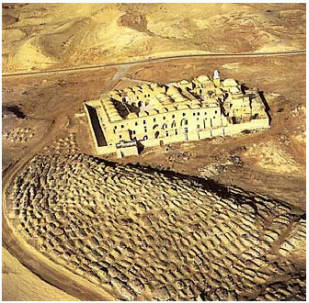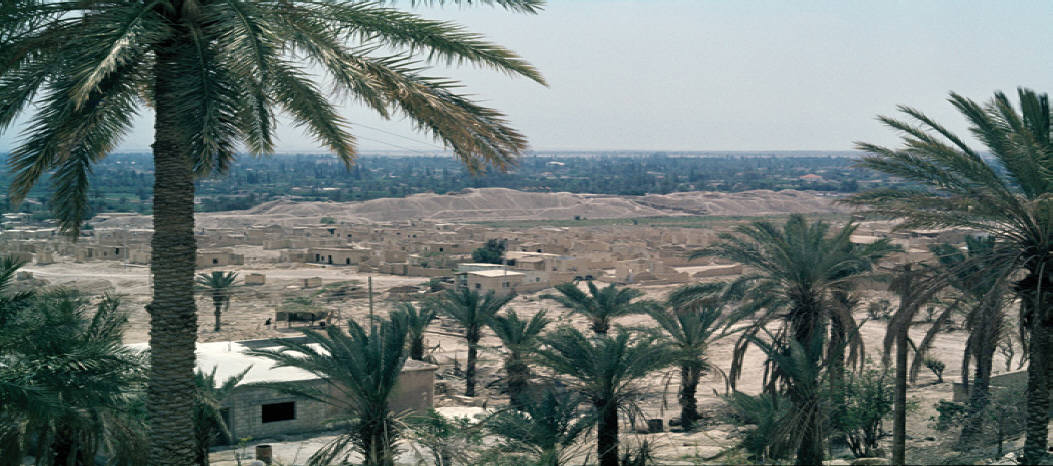




Nabi Musa
Nazareth Travel Group 2013 | All rights reserved | No part of this site may be reproduced, altered or used for commercial
endeavors without the written permission of Nazareth Travel Group

Nabi Musa, or the Tomb of Prophet Moses (pbuh), lies 11 km south of Jericho and 20 km east of Jerusalem in the Judean wilderness. A side road to the right of the main Jerusalem-Jericho road, about 2 km beyond the sign indicating sea level, leads to the site venerated by Muslims as Maqam El-Nabi Musa. According to local tradition, the Maqam (tomb) of Nabi Musa is considered to be a holy site for Muslims because it houses the grave of Prophet Moses (pbuh), one of the great prophets of Islam.
The bituminous rocks around the shrine add to its mystique and sanctity, as they are flammable and used by pilgrims as fuel for warmth and cooking. The Tomb has been the site of annual pilgrimage since the time of Salah Eddin. Although the last chapter in the Book of Deuteronomy tells us that Moses (pbuh) died and was buried on the other side of the Jordan River (Duet 34) and that no one knew where his Tomb was. Muslim tradition holds that Salah Eddin had a dream in which it had been revealed to him the site where the prophet Moses (pbuh) was venerated and subsequently he built a cenotaph and on top of it a mosque.
The main body of the present shrine, mosque, minaret and some rooms were built during the reign of Al-Dhaher Baybers, a Mamluk Sultan, in 1269 AD. Pilgrimage started at that time bringing thousands of people from Jerusalem to Nabi Musa in a procession after which they camped at the site for a whole week. In 1410 a hospice for the pilgrims was built and a minaret. Due to the growth in the number of pilgrims every year, the hospice had to be extended to its present spacious dimensions.
In 1820, the Turks restored the building and encouraged the 7-day pilgrimage, which started from Al-Aqsa mosque in Jerusalem and hosted a full day until the arrival in Nabi Musa. The rest of the days were spent in prayers, feasting and games. Pilgrims marched in grand procession singing religious songs, dancing and playing flutes until they reached the Maqam. Prayers, celebrations and games continued for five days around the shrine.


